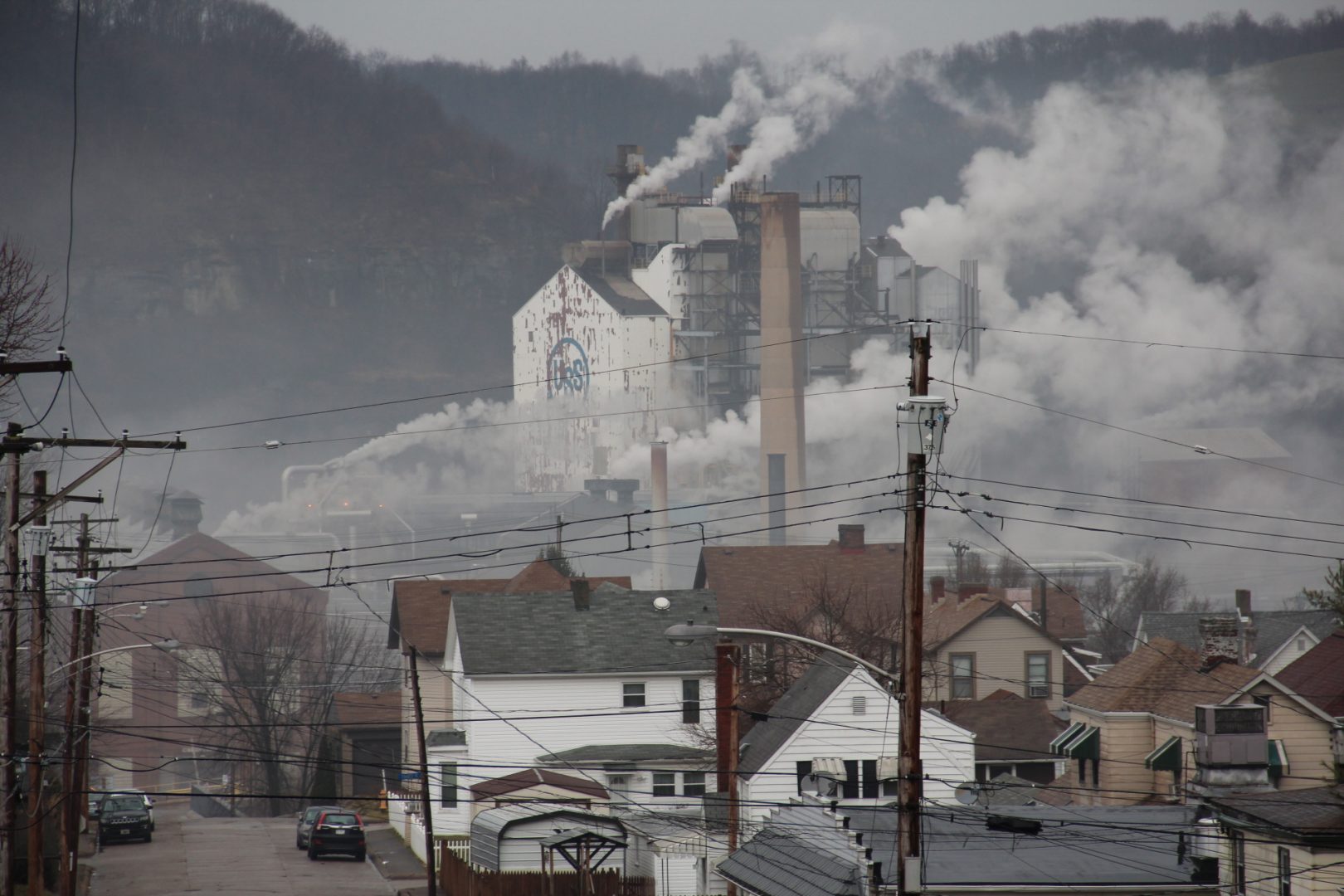
U.S. Steel's Clairton Plant, the largest coke works in North America, in Clairton, Pa.
Reid R. Frazier / StateImpact Pennsylvania


U.S. Steel's Clairton Plant, the largest coke works in North America, in Clairton, Pa.
Reid R. Frazier / StateImpact Pennsylvania

Reid R. Frazier / StateImpact Pennsylvania
U.S. Steel's Clairton Plant, the largest coke works in North America, in Clairton, Pa.
Allegheny County has a new rule on the books aimed at lowering air pollution levels during weather events that trap industrial fumes near the ground.
The new “Episode” rule, signed by Allegheny County executive Rich Fitzgerald, requires industrial polluters in Pittsburgh’s Mon Valley to come up with a plan to lower emissions during inversions — weather patterns that trap air pollution close to the ground, and are common in fall and winter.
Under the rule, the county would issue inversion “watches” and “warnings” when companies would be expected to implement their pollution-lowering practices.
Eighteen plants in the county would be affected by the new rule, including U.S. Steel’s Clairton Coke Works, the biggest single source of small particulate pollution, or PM 2.5, (particles smaller than 2.5 micrometers) in the county. Others include Eastman Chemical Resins in Jefferson Hills, DURA-Bond Industries in Duquesne, and Keywell Metals in West Mifflin.
Patrick Dowd, chief operating officer for the Allegheny County Health Department, said each company can decide how it wants to lower emissions. “They could range from reduction of production, to expansion of production times,” Dowd said.
The county has the option of asking the companies to beef up their plans, if its air quality team thinks that they won’t lower air pollution levels enough.
“We’ll obviously be evaluating those and then determining whether or not they’re appropriate,” Dowd said
Inversions occur when a warm air layer traps colder air and pollutants near the earth’s surface, and are common during colder months. They can lead to bad air quality. Scientists say climate change is likely to make inversions more frequent in the future.
Rachel Filippini, executive director of the Group Against Smog and Pollution, applauded the new rule. But she said its success will depend on the plans produced by companies like U.S. Steel, and how much stomach the county has to force companies to lower emissions if their plans don’t go far enough.
“What if the plans are there and an episode happens and the plans kick in, but they don’t make enough of a difference and they don’t help to improve air quality?” Filippini said. “How quickly is the health department going to say to X company affected by this, ‘Look, this isn’t working. You’re going to need to do more.’”
U.S. Steel, in a statement, said that it “conceptually” supports the rule, but said it is concerned that the rule doesn’t apply to businesses outside the Mon Valley, an area with the largest remaining stretch of steelmaking facilities in the region. The county health department “should expand the applicability of the rule to include all sources of PM2.5 across Allegheny County,” the company said in a statement.
Dowd said that the county was focusing on the Mon Valley right now because that is where the air is the worst. The county’s air monitors near the Clairton plant have historically had the highest soot levels in the region, and during inversions, frequently spike above federal soot limits, as had happened during an inversion last winter.
He said U.S. Steel had sat “at the table” along with other companies when the county was crafting the rule, and that it had already voluntarily altered its operations during inversion events.
“We’re confident that [the county] can do this,” Dowd said. “There’s no reason for them not to, and we look forward to it being successfully implemented.”
Each company will have 90 days to come up with their pollution reduction plans.
StateImpact Pennsylvania is a collaboration among WITF, WHYY, and the Allegheny Front. Reporters Reid Frazier, Rachel McDevitt and Susan Phillips cover the commonwealth’s energy economy. Read their reports on this site, and hear them on public radio stations across Pennsylvania.
(listed by story count)
StateImpact Pennsylvania is a collaboration among WITF, WHYY, and the Allegheny Front. Reporters Reid Frazier, Rachel McDevitt and Susan Phillips cover the commonwealth’s energy economy. Read their reports on this site, and hear them on public radio stations across Pennsylvania.
Climate Solutions, a collaboration of news organizations, educational institutions and a theater company, uses engagement, education and storytelling to help central Pennsylvanians toward climate change literacy, resilience and adaptation. Our work will amplify how people are finding solutions to the challenges presented by a warming world.